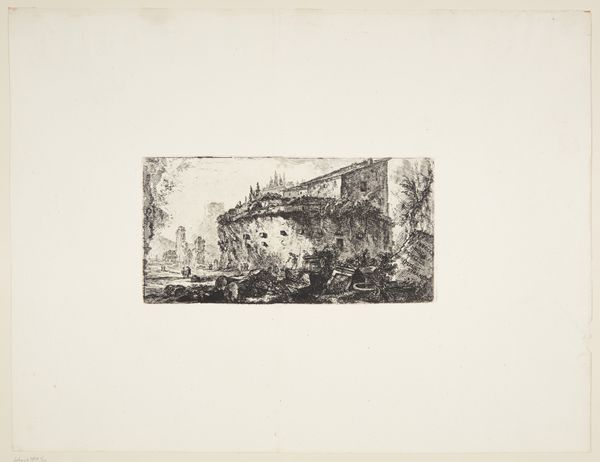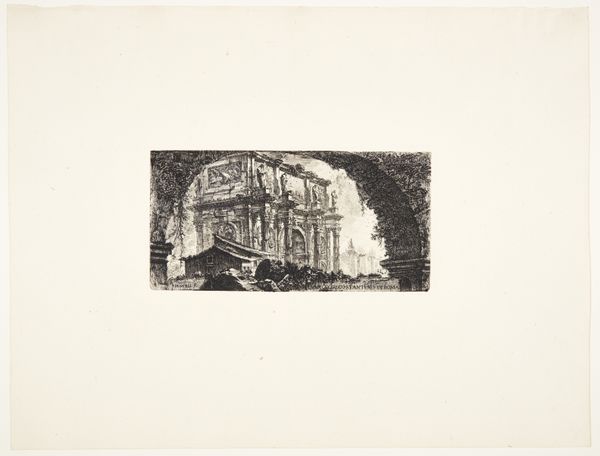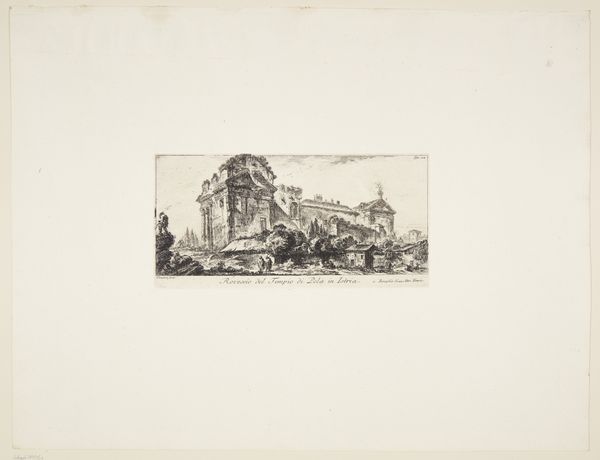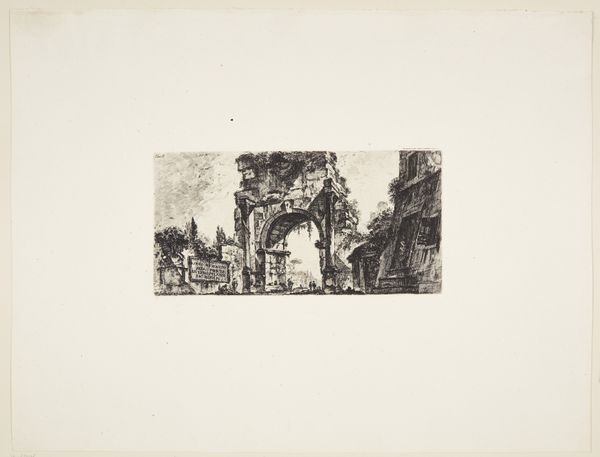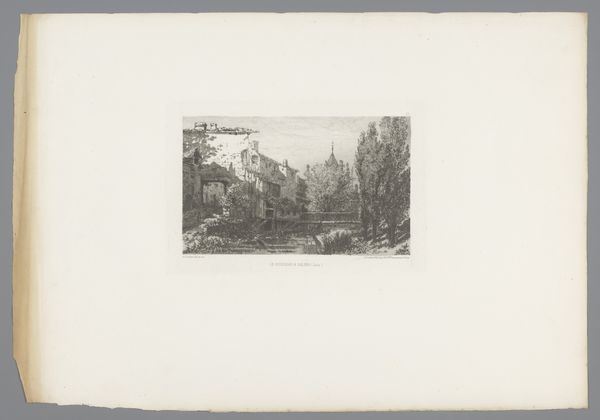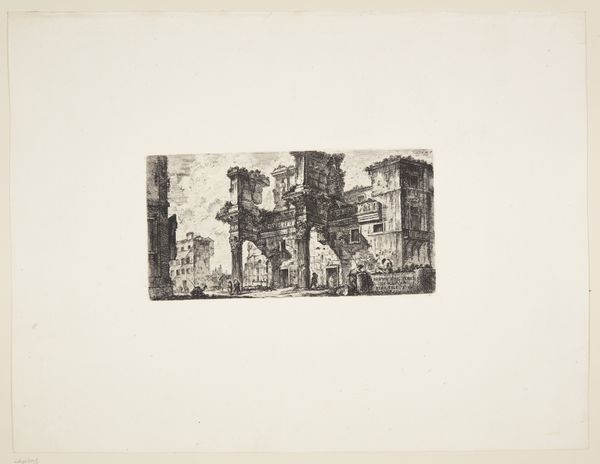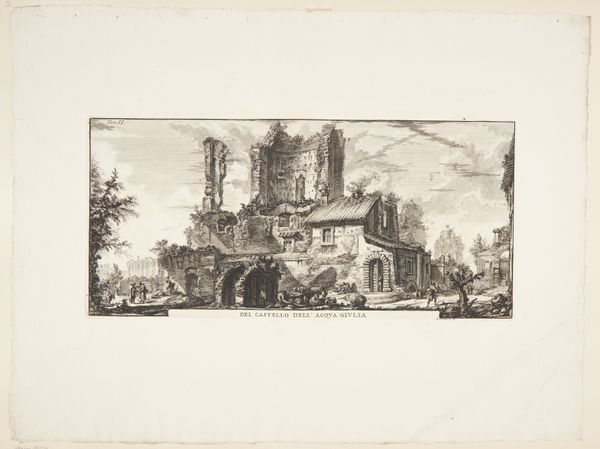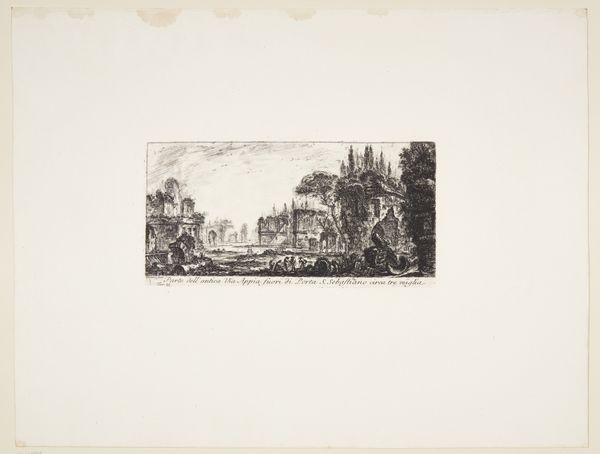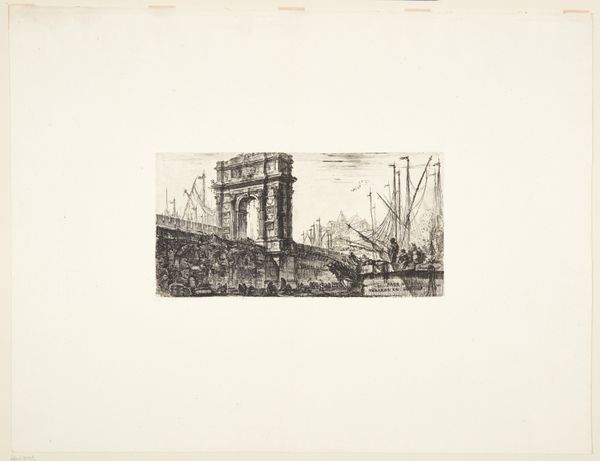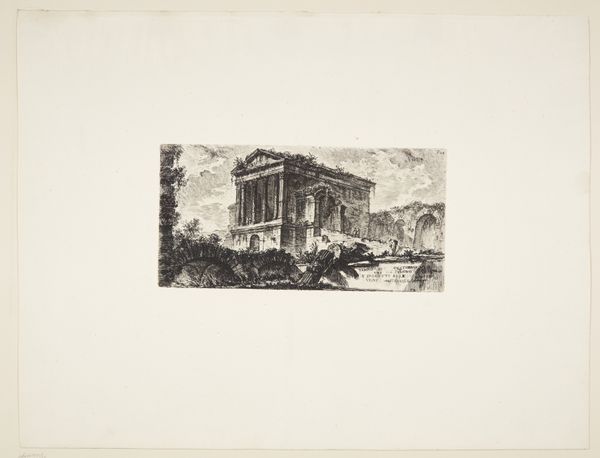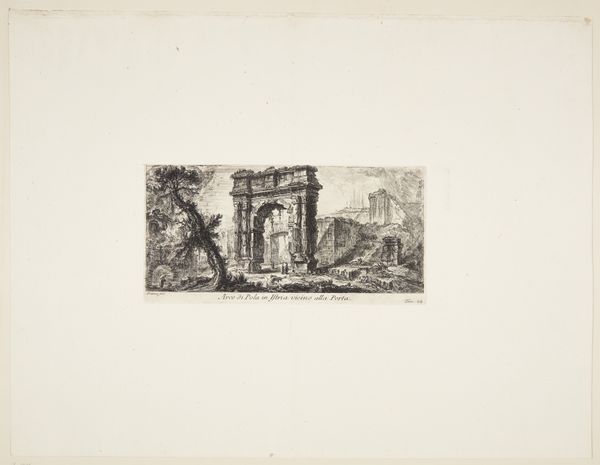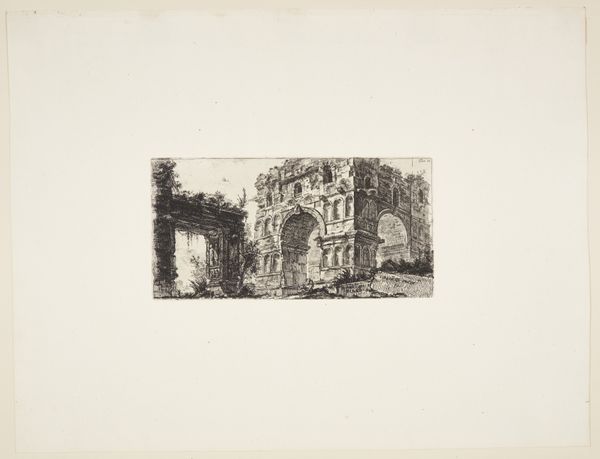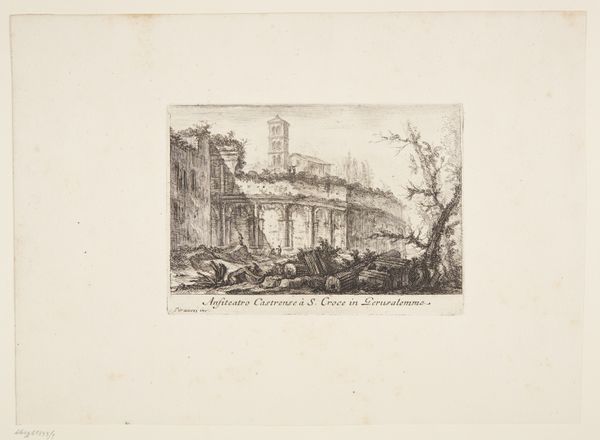
Dimensions: 138 mm (height) x 270 mm (width) (plademaal)
Curator: Looking at this, I’m immediately struck by the sense of faded grandeur, a melancholy almost. Editor: This is Giovanni Battista Piranesi’s "Arch of Gallienus," an etching made around 1748. You're absolutely right; there's a romance to the ruin he captures. Curator: It's the decay, isn’t it? The arch itself seems almost skeletal, stripped of its original power, but still imposing. Why do you think Piranesi chose this viewpoint? It's not exactly heroic. Editor: Piranesi was obsessed with the weight of history, the layers of time bearing down. This image is not just about architecture but about the enduring power and, simultaneously, the vulnerability of Rome. Notice how he uses light and shadow. Curator: Yes, the light emphasizes the rough textures of the stone. And those tiny figures, almost swallowed by the immensity of the arch. It emphasizes a contrast. The ephemeral nature of life versus the seemingly permanent stone. Editor: Exactly! They also suggest the continuation of life, a resilience of human existence within the framework of a fallen empire. Piranesi returns to these architectural icons across decades. It becomes part of the artist’s visual memory that is repeatedly reimagined. Curator: You know, thinking about it as a print, an etching. It's not about perfection; the lines are rough, almost frantic in places. Do you agree the marks of time and decay seem deliberate here? Editor: Absolutely. The imperfections, the smudges—they add to that feeling of antiquity. It is Piranesi showing us, in a way that feels surprisingly modern, not just an image of the Arch of Gallienus, but also its shadow, its story of collapse. Curator: Thinking about the arch itself, that’s dedicated to Emperor Gallienus from around the 3rd century. We understand those emblems of Imperial rule can become symbols of decline. It shows how meaning shifts and erodes. Editor: A somber memento mori rendered in ink and paper, reflecting on time. A good reminder that nothing lasts forever. Curator: It leaves a lot to ponder, I appreciate that it’s far from the classical triumph imagery you often associate with Rome, it makes it a fascinating insight.
Comments
No comments
Be the first to comment and join the conversation on the ultimate creative platform.
